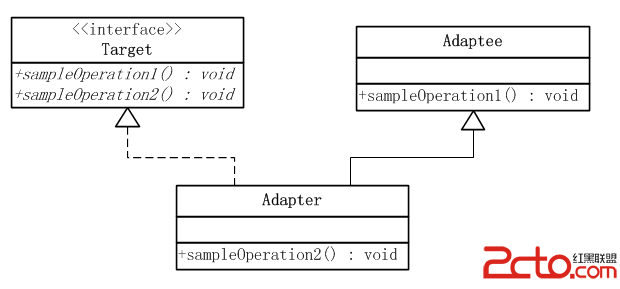編輯:關於Android編程
Android中的自定義屬性:本來想寫一篇關於自定義View中自定義屬性的詳解文章的,結果發現了洋大神的這篇文章,很詳細,分析的很透徹。本著不重復造輪子的思想,分享這一篇大神的文章。
對於自定義屬性,大家肯定都不陌生,遵循以下幾步,就可以實現:
1,自定義一個CustomView(extends View )類
2,編寫values/attrs.xml,在其中編寫styleable和item等標簽元素
3,在布局文件中CustomView使用自定義的屬性(注意namespace)
4,在CustomView的構造方法中通過TypedArray獲取
那麼,我有幾個問題:
以上步驟是如何奏效的?
styleable 的含義是什麼?可以不寫嘛?我自定義屬性,我聲明屬性就好了,為什麼一定要寫個styleable呢?
如果系統中已經有了語義比較明確的屬性,我可以直接使用嘛?
構造方法中的有個參數叫做AttributeSet
(eg: MyTextView(Context context, AttributeSet attrs) )這個參數看名字就知道包含的是參數的數組,那麼我能不能通過它去獲取我的自定義屬性呢?
TypedArray是什麼鬼?從哪冒出來的,就要我去使用?
接下來通過例子來回答上述問題,問題的回答順序不定~~大家先看一個常見的例子,即上述幾個步驟的代碼化。
自定義屬性的聲明文件
自定義的一個View類
package com.example.test;
import android.content.Context;
import android.content.res.TypedArray;
import android.util.AttributeSet;
import android.util.Log;
import android.view.View;
public class MyTextView extends View {
private static final String TAG = MyTextView.class.getSimpleName();
public MyTextView(Context context, AttributeSet attrs) {
super(context, attrs);
TypedArray ta = context.obtainStyledAttributes(attrs, R.styleable.test);
String text = ta.getString(R.styleable.test_testAttr);
int textAttr = ta.getInteger(R.styleable.test_text, -1);
Log.e(TAG, "text = " + text + " , textAttr = " + textAttr);
ta.recycle();
}
}
布局文件中使用
大家花3s掃一下,運行結果為:
MyTextView: text = helloworld , textAttr = 520
應該都不意外吧,注意下,我的styleable的name寫的是test,所以說這裡並不要求一定是自定義View的名字。
下面考慮:
構造方法中的有個參數叫做AttributeSet(eg: MyTextView(Context context, AttributeSet attrs) )這個參數看名字就知道包含的是參數的集合,那麼我能不能通過它去獲取我的自定義屬性呢?
首先AttributeSet中的確保存的是該View聲明的所有的屬性,並且外面的確可以通過它去獲取(自定義的)屬性,怎麼做呢?
其實看下AttributeSet的方法就明白了,下面看代碼。
public MyTextView(Context context, AttributeSet attrs) {
super(context, attrs);
int count = attrs.getAttributeCount();
for (int i = 0; i < count; i++) {
String attrName = attrs.getAttributeName(i);
String attrVal = attrs.getAttributeValue(i);
Log.e(TAG, "attrName = " + attrName + " , attrVal = " + attrVal);
}
// ==>use typedarray ...
}
輸出:
MyTextView(4136): attrName = layout_width , attrVal = 100.0dip MyTextView(4136): attrName = layout_height , attrVal = 200.0dip MyTextView(4136): attrName = text , attrVal = helloworld MyTextView(4136): attrName = testAttr , attrVal = 520
結合上面的布局文件,你發現了什麼?
我擦,果然很神奇,真的獲得所有的屬性,恩,沒錯,通過AttributeSet可以獲得布局文件中定義的所有屬性的key和value(還有一些方法,自己去嘗試),那麼是不是說TypedArray這個鬼可以拋棄了呢?答案是:NO!。
現在關注下一個問題:
TypedArray是什麼鬼?從哪冒出來的,就要我去使用?
我們簡單修改下,布局文件中的MyTextView的屬性。
現在再次運行的結果是:
MyTextView(4692): attrName = layout_width , attrVal = @2131165234 MyTextView(4692): attrName = layout_height , attrVal = @2131165235 MyTextView(4692): attrName = text , attrVal = @2131361809 MyTextView(4692): attrName = testAttr , attrVal = 520 >>use typedarray MyTextView(4692): text = Hello world! , textAttr = 520
發現了什麼?通過AttributeSet獲取的值,如果是引用都變成了@+數字的字符串。你說,這玩意你能看懂麼?那麼你看看最後一行使用TypedArray獲取的值,是不是瞬間明白了什麼。
TypedArray其實是用來簡化我們的工作的,比如上例,如果布局中的屬性的值是引用類型(比如:@dimen/dp100),如果使用AttributeSet去獲得最終的像素值,那麼需要第一步拿到id,第二步再去解析id。而TypedArray正是幫我們簡化了這個過程。
貼一下:如果通過AttributeSet獲取最終的像素值的過程:
int widthDimensionId = attrs.getAttributeResourceValue(0, -1);
Log.e(TAG, "layout_width= "+getResources().getDimension(widthDimensionId));
現在別人問你TypedArray存在的意義,你就可以告訴他了。
我們已經解決了兩個問題,接下來,我們看看布局文件,我們有一個屬性叫做:zhy:text。
總所周知,系統提供了一個屬性叫做:Android:text,那麼我覺得直接使用android:text更nice,這樣的話,考慮問題:
如果系統中已經有了語義比較明確的屬性,我可以直接使用嘛?
答案是可以的,怎麼做呢?
直接在attrs.xml中使用android:text屬性。
注意,這裡我們是使用已經定義好的屬性,不需要去添加format屬性(注意聲明和使用的區別,差別就是有沒有format)。
然後在類中這麼獲取:ta.getString(R.styleable.test_android_text);布局文件中直接android:text=”@string/hello_world”即可。
這裡提一下,系統中定義的屬性,其實和我們自定義屬性的方式類似,你可以在sdk/platforms/android-xx/data/res/values該目錄下看到系統中定義的屬性。然後你可以在系統提供的View(eg:TextView)的構造方法中發現TypedArray獲取屬性的代碼(自己去看一下)。
接下來,我在想,既然declare-styleable這個標簽的name都能隨便寫,這麼隨意的話,那麼考慮問題:
styleable 的含義是什麼?可以不寫嘛?我自定義屬性,我聲明屬性就好了,為什麼一定要寫個styleable呢?
其實的確是可以不寫的,怎麼做呢?
首先刪除declare-styleable的標簽
那麼現在的attrs.xml為:
喲西,so清爽~
MyTextView實現
package com.example.test;
import android.content.Context;
import android.content.res.TypedArray;
import android.util.AttributeSet;
import android.util.Log;
import android.view.View;
public class MyTextView extends View {
private static final String TAG = MyTextView.class.getSimpleName();
private static final int[] mAttr = { android.R.attr.text, R.attr.testAttr };
private static final int ATTR_ANDROID_TEXT = 0;
private static final int ATTR_TESTATTR = 1;
public MyTextView(Context context, AttributeSet attrs) {
super(context, attrs);
// ==>use typedarray
TypedArray ta = context.obtainStyledAttributes(attrs, mAttr);
String text = ta.getString(ATTR_ANDROID_TEXT);
int textAttr = ta.getInteger(ATTR_TESTATTR, -1);
//輸出 text = Hello world! , textAttr = 520
Log.e(TAG, "text = " + text + " , textAttr = " + textAttr);
ta.recycle();
}
}
貌似多了些代碼,可以看到我們聲明了一個int數組,數組中的元素就是我們想要獲取的attr的id。並且我們根據元素的在數組中的位置,定義了一些整形的常量代表其下標,然後通過TypedArray進行獲取。
可以看到,我們原本的:
R.styleable.test => mAttr R.styleable.test_text => ATTR_ANDROID_TEXT(0) R.styleable.test_testAttr => ATTR_TESTATTR(1)
那麼其實呢?android在其內部也會這麼做,按照傳統的寫法,它會在R.Java生成如下代碼:
public static final class attr {
public static final int testAttr=0x7f0100a9;
}
public static final class styleable {
public static final int test_android_text = 0;
public static final int test_testAttr = 1;
public static final int[] test = {
0x0101014f, 0x7f0100a9
};
}
根據上述你應該發現了什麼。styleale的出現系統可以為我們完成很多常量(int[]數組,下標常量)等的編寫,簡化我們的開發工作(想想如果一堆屬性,自己編寫常量,你得寫成什麼樣的代碼)。那麼大家肯定還知道declare-styleable的name屬性,一般情況下寫的都是我們自定義View的類名。主要為了直觀的表達,該declare-styleable的屬性,都是改View所用的。
現在5個問題,回答了4個,第一個問題:
自定義屬性的幾個步驟是如何奏效的?
恩,上述以及基本涵蓋了這個問題的答案,大家自己總結,所以:略。
總結下今天的博客。
attrs.xml裡面的declare-styleable以及item,android會根據其在R.java中生成一些常量方便我們使用(aapt干的),本質上,我們可以不聲明declare-styleable僅僅聲明所需的屬性即可。 我們在View的構造方法中,可以通過AttributeSet去獲得自定義屬性的值,但是比較麻煩,而TypedArray可以很方便的便於我們去獲取。 我們在自定義View的時候,可以使用系統已經定義的屬性。 Android 6.0 運行時權限封裝框架
Android 6.0 運行時權限封裝框架
1.概述 視頻講解都已經錄了好幾天,但是最近實在抽不開身一直在忙Unity3D,就連光棍節都在寫,上次我們只是寫了Android 6.0 運行時權限處理解析,但是並未對
 Android源碼之ListView的適配器模式
Android源碼之ListView的適配器模式
模式的定義 適配器模式把一個類的接口變換成客戶端所期待的另一種接口,從而使原本因接口不匹配而無法在一起工作的兩個類能夠在一起工作。 使用場景 用電源接口做例
 Android Material Design動畫
Android Material Design動畫
最近在看一些關於Material Design的東西,還記得在博客《你所不知道的Activity轉場動畫——ActivityOptions》中,我
 Android 自定義圓圈進度並顯示百分比例控件(純代碼實現)
Android 自定義圓圈進度並顯示百分比例控件(純代碼實現)
首先,感謝公司能給我閒暇的時間,來穩固我的技術,讓我不斷的去探索研究,在此不勝感激。 先不說實現功能,上圖看看效果 這個是續上一次水平變色進度條的有一個全新的控件,理論實
 使用數據源碼解析Android中的Adapter、BaseAdapter、ArrayAdapter、SimpleAdapter和SimpleCursorAdapter
使用數據源碼解析Android中的Adapter、BaseAdapter、ArrayAdapter、SimpleAdapter和SimpleCursorAdapter
Adapter相當於一個數據源,可以給AdapterView提供數據,並